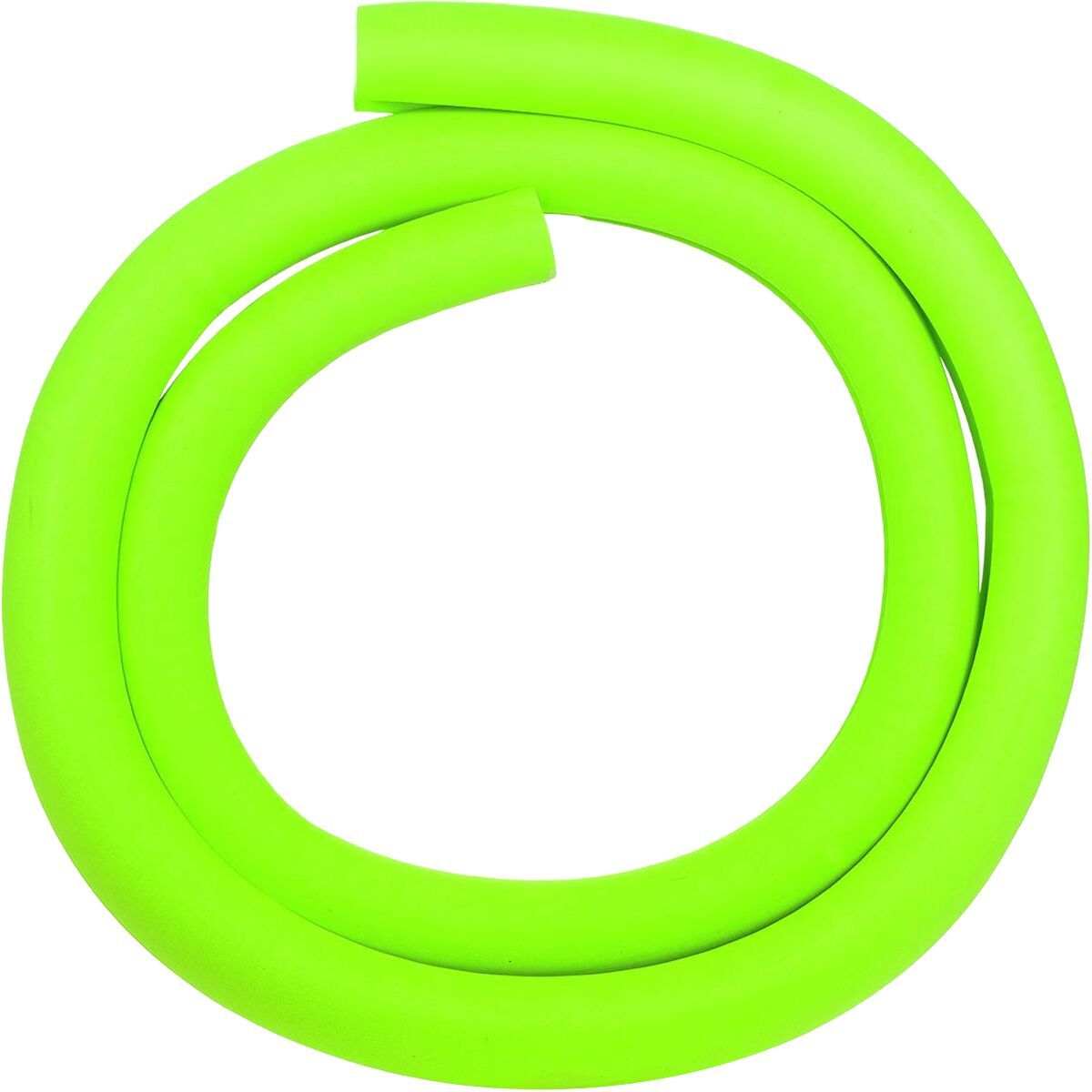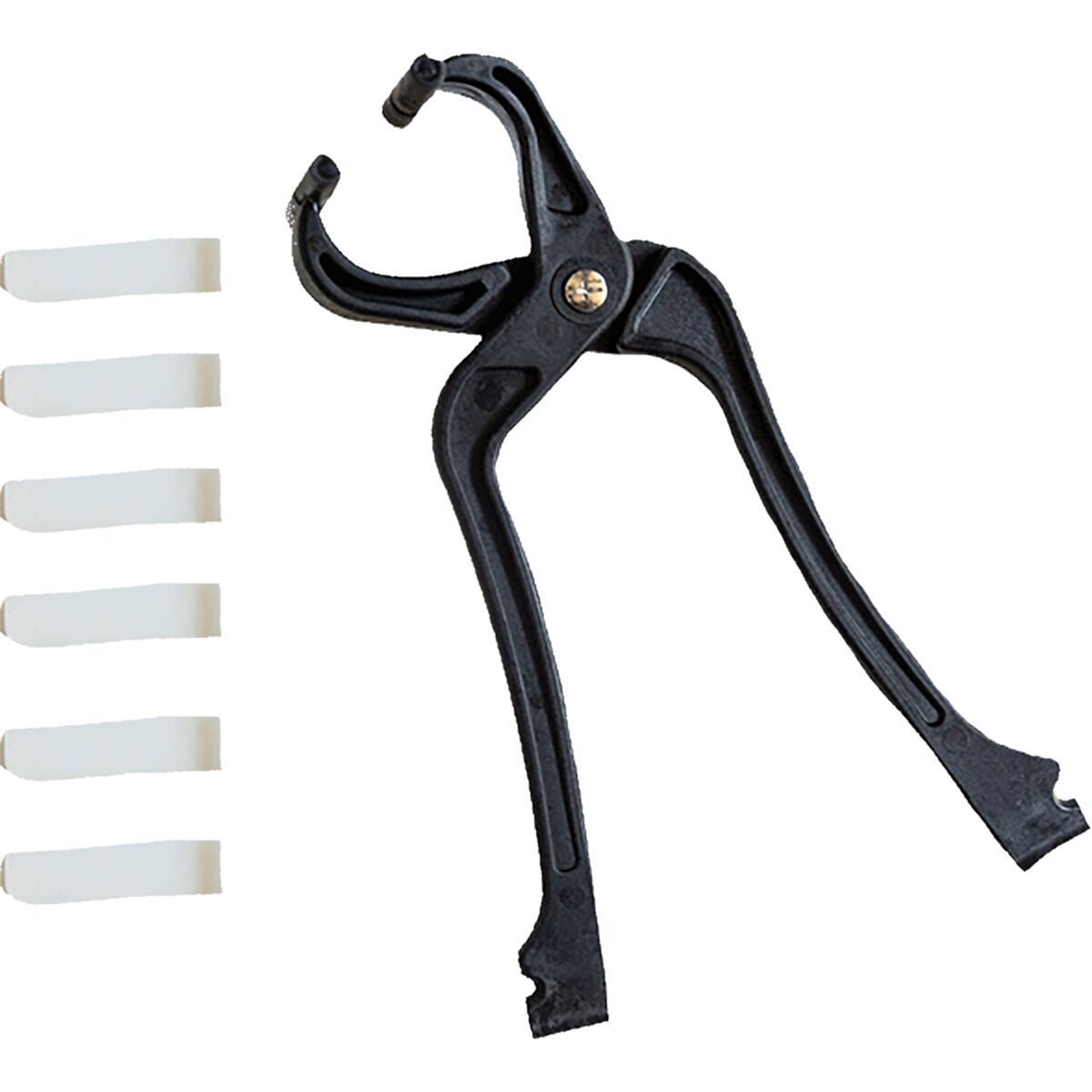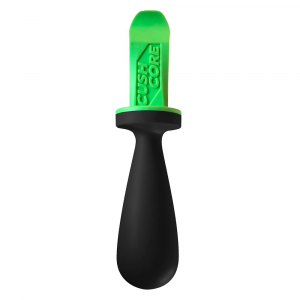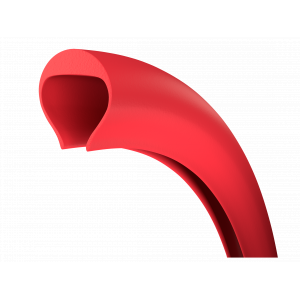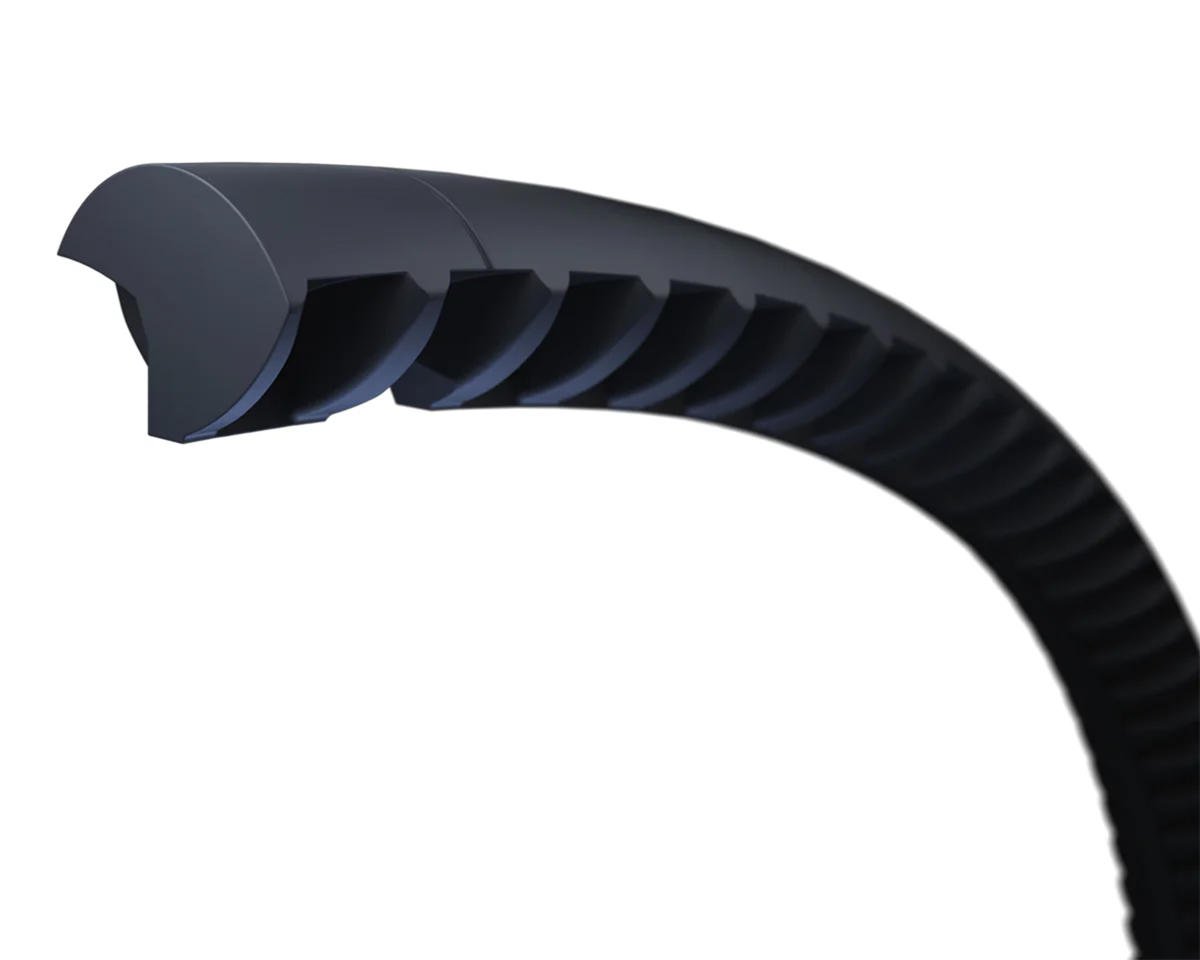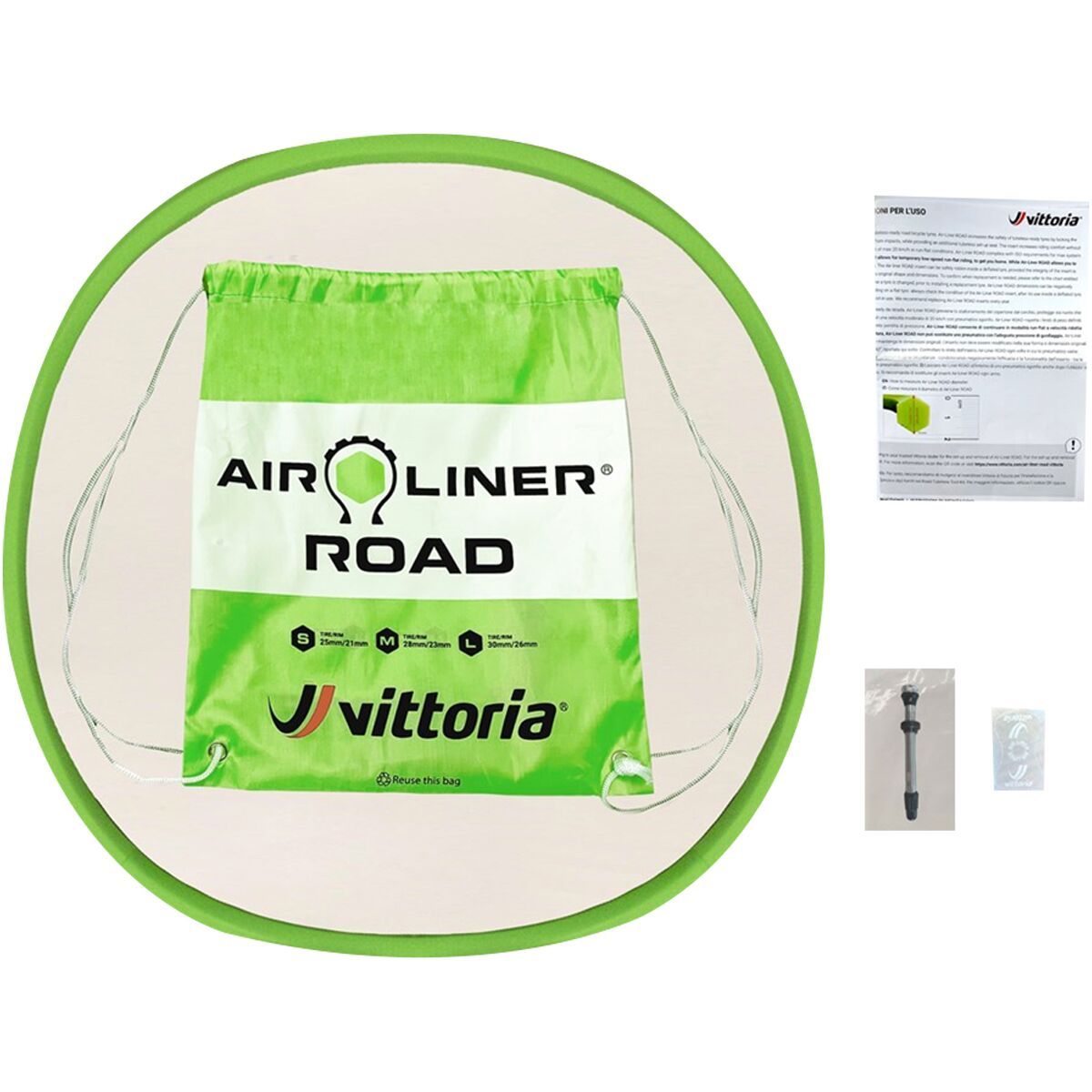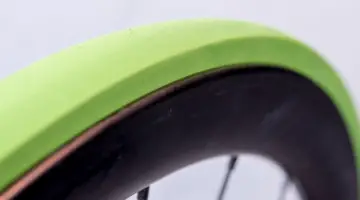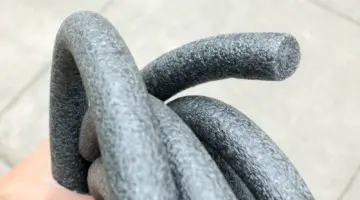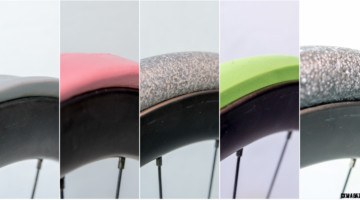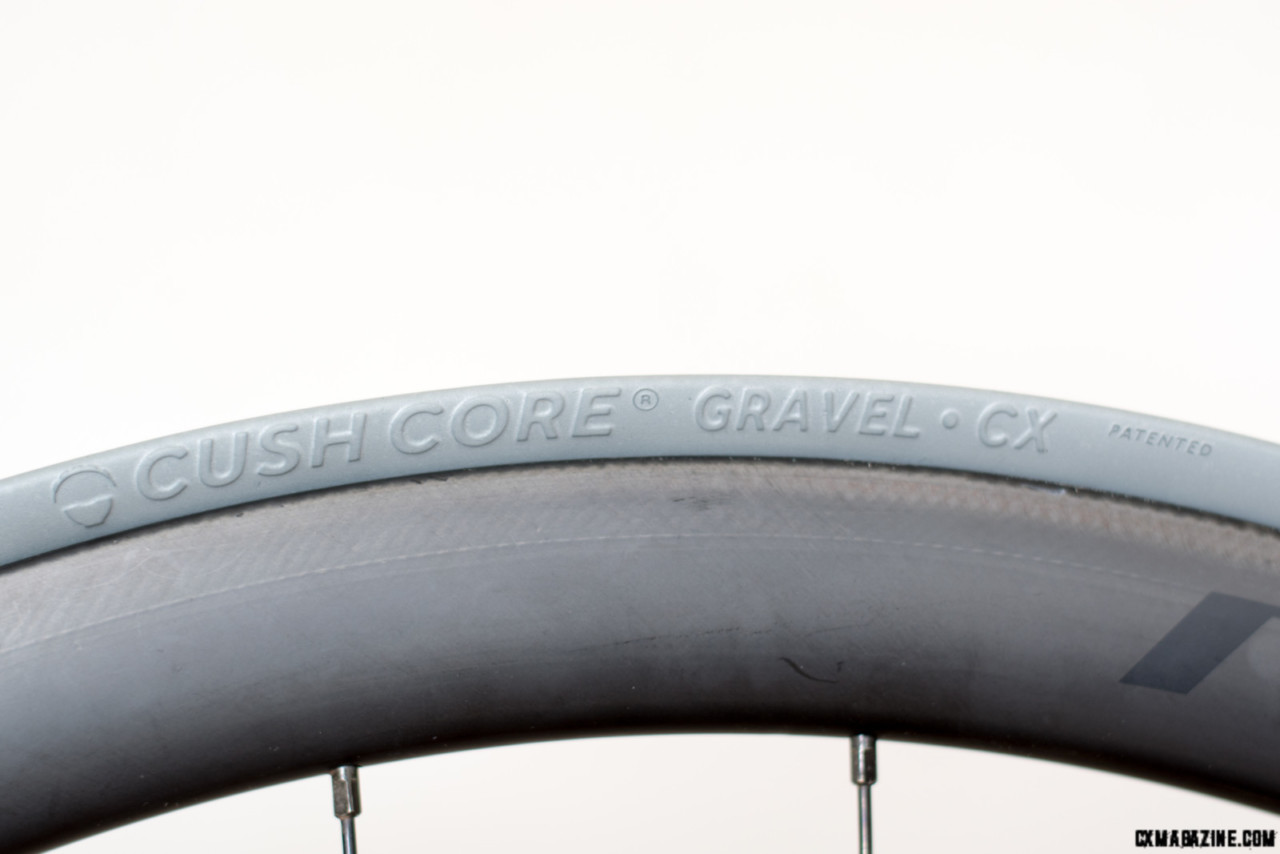
Cushcore Gravel.CX insert sits 12mm higher than the rim wall. © C. Lee / Cyclocross Magazine
For our final review of our four-part tire insert series, we revisit the Cushcore Gravel.CX tubeless tire insert.
Just before the pandemic, I posted a largely positive review of the Cushcore Gravel.CX tubeless tire insert which allowed more comfort and control while running lower tire pressure with Gravel-sized tires. The Cushcore, invented by KTM motorcycle suspension engineer and downhill mountain bike rider Adam Krefting, is arguably one of the first commercially available inserts specifically for tubeless tires. His goal was to improve bike handling and control with low tire pressure. At a certain point for each tire, the sidewall will fold and collapse due to a lack of support from air pressure. This has obvious deleterious effects on bike handling.
A positive side effect of the insert is rim and tire protection from impact with the ground as the tire compresses when using low tire pressure.
You can now find several other tubeless tire inserts, particularly for gravel-sized tires with the rapid rise of gravel cycling. In this series, we have reviewed the Tannus Armour Tubeless, Vittoria Air-Liner Gravel, and a DIY option based on an early Tubolight insert. How does the Cushcore Gravel/CX compare given innovation from the competitors?
Updated but Relatively Unchanged
Cushcore kindly sent out a new set of Gravel.CX inserts when I inquired about changes. The Cushcore Gravel.CX appears the same compared to the earlier version except for the molded logo now states “patented” as opposed to “patent pending”. Also, the embossed word “extralight” is new. The weight is 110 grams per insert, on par with advertised. The previous set measured 125 grams per insert, though the goal was 110 grams based on a discussion at the Sea Otter Classic 2019. Visually, the two examples I have look the same with tractor tread-like inner diameter and a couple of channels along the side 180 degrees apart for sealant flow around the insert.
Cushcore’s material is smooth and quite dense. It does not have the rough polyethylene appearance of the Tannus Armour or the DIY backer rod inserts. It is smoother and has a shinier surface than the cut EVA foam of the Vittoria Air-Liner gravel. The compression firmness subjectively feels the same as the other liners.
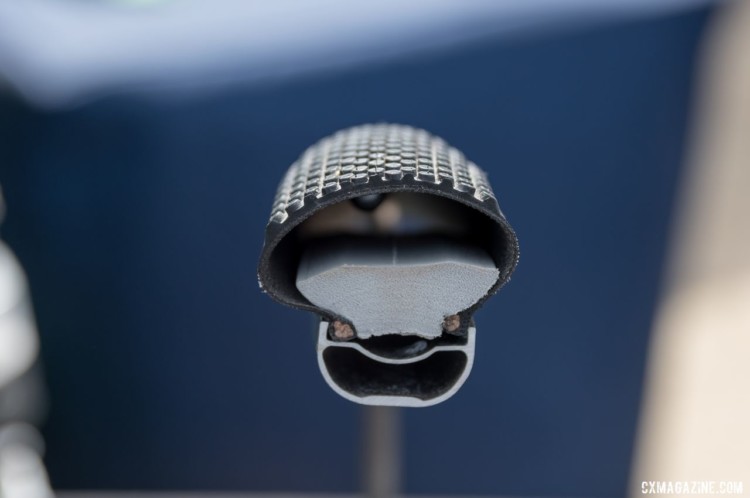
CushCore demoed how the Cushcore insert fits the tire. Cushcore Gravel Tire Insert, 2019 Sea Otter Classic. © C. Lee / Cyclocross Magazine
The inner bumps that give the tractor-tread appearance are 12mm wide and 3mm high. They fit into the rim channel to hold the insert in place. The total thickness of the Cushcore Gravel.CX is 15mm with a maximum width of 37mm. The Gravel.CX is for 700C specifically, 33-46mm tires and 19-26mm inner rim width. Insitu on a 21mm internal width rim the insert sinks into the rim a bit, so is 35mm wide and still 11mm above the rim wall. For a typical gravel rim that is 5mm from the bottom of the channel to the top of the rim wall, the bumps are not sitting deep in the channel, but deep enough to hold the insert in place.
Installation
I’ve learned a lot and become quite adept with the installation of tire inserts over the past 3 years and particularly in the few months of reviewing these inserts. Cushcore is responsible for my most useful tubeless tire insert installation tool, the Bead Dropper. Using a pre-stretched tire and then leaving one bead mounted on the rim greatly eases the installation of any insert.
The Cushcore has a tighter fit over the rim than any of the other inserts, but I did not have any trouble installing it. I used a light spray of water to lubricate things to help the Cushcore Gravel.CX slip into the tire with just a bit more effort than an undersized tube. Pre-stretching a new Cushcore out of the box is helpful to smooth any creases from the packaging.
There are two sections with grooves on the side of the insert, I place one of those aligned with the valve cores to aid sealant dispersion when filling sealant through the valve stem. With the initial installation, I like to pour the sealant into the tire just as I’m pulling the bead over. This is faster and easier than pouring the sealant through the relatively small valve stem.
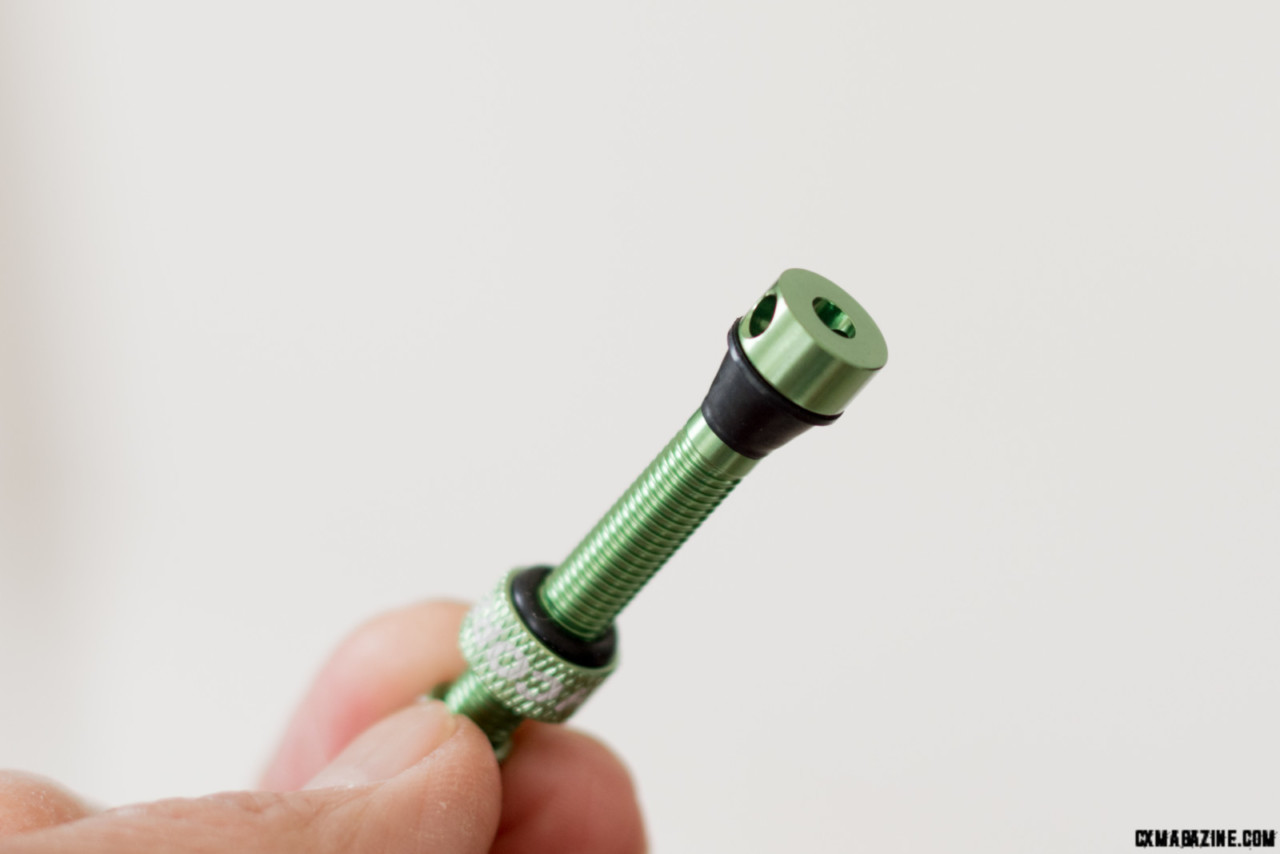
The top and side opening Cushcore valve stem. © C. Lee / Cyclocross Magazine
Cushcore Gravel.CX Performance
The previous episodes of this tubeless tire insert review series describe my test parameters. I rode the same tire and rim combination over the same roads, trails, and CX practice course. I based my impressions on the front wheel insert but tried the inserts on the rear wheel, and with a narrower tire as well. The CX course test includes decreasing tire pressure by 1 psi increments until the tire is flat to gauge how the insert affects handling compared to no insert, and compared to the other inserts.
The Cushcore Gravel.CX is a solid and dense shaped foam strip. Its size is a perfect stretched fit on a 700C rim, just a bit less tight than a new tubular. This keeps the insert well in place, tight against the tire bead, and pushing on the lower side wall. The cross-sectional area taken by the Cushcore Gravel.CX is roughly 30% of the rim and tire combination I use for this review series. With the tire deflated, you can feel the Cushcore solidly against the rim, pushing out a bit on the lower tire sidewall.
On par with other inserts in this review, 19-20 psi was the sweet spot offering traction, comfort and control off-pavement. For the Cushcore Gravel.CX the tire begins to fold in leaned corners around 17 psi and feels squirmy at 15. This is all within a psi of the other inserts. However, there is some subtle support even at the 14-15 psi level, much like riding a well-glued tubular at very low pressure. The tire seems to collapse and fold more predictably and you can learn how far to take it. Maybe I’m now accustomed to riding flat tires with tubeless tire inserts, but the Cushcore Gravel.CX seems to have an edge in this low-pressure handling test. The tire bead remains firmly seated and the tire never burped.
Riding on the completely deflated tire is rather reasonable, second only to the DIY backer rod insert which has a large volume. The DIY backer rod insert yields more cornering confidence since the tire does not collapse as much, but the Cushcore performs admirably, and better than the Vittoria Air-Liner Gravel or the Tannus Armour Tubeless. The thick lip of support from the Cushcore Gravel.CX was quite decent on the cambers and flat turns. I was able to ride the entire cyclocross course with no front air pressure using the Cushcore Gravel/CX insert, albeit slowly on downhill features that place a lot of tangential and lateral force on the tire.
I felt completely confident with the Cushcore Gravel.CX in place. The damping quality palpably reduces the feeling of tire bounce and prevents damage on rocky descents. Although the Cushcore is nearly double the weight of the Tannus Armour Tubeless, those 2 ounces are only noticeable when lifting the wheel for comparison. The added hysteresis from the Cushcore pushing against the tire indubitably increases rolling resistance. Still, I cannot measure the amount, nor can I feel it with my limited power output at the moderate speeds I travel. I can argue its handling improvement and protection allow faster descending despite any added rolling resistance.
Comparison to Other Tire Inserts
The Cushcore Gravel/CX is the heaviest of the inserts. It fits the tightest against the rim. It fills approximately the same cross-section area as the Tannus but is dense and solid whereas the Tannus Armour is hollow.
Tubeless Tire Insert Comparison and Review for CX and Gravel
| Tannus Armour | DIY | Vittoria Air Liner Gravel | Cushcore Gravel/CX | |
|---|---|---|---|---|
| Hoop Diameter | 700C | Cut to Fit | Cut to Fit | 700C |
| Cross Section mm | 35w X 15h | 32 round | 23w X 15h | 37w x 15h |
| recommended tire widths mm | 33-47 | 37-45 | 31-40 | 33-46 |
| recommended rim width, internal mm | not stated | 19-25 | not stated | 19-26 |
| Approximate tire and rim cross-section filled by the insert | 30% | 50% | 20% | 30% |
| sized weight 700C | 67 grams | 32 grams | 40 grams | 110 grams |
| cost per wheel USD | 50 + valve stem | 7+ valve stem | 40 | 75 |
| advantage | light weight for broad protection | lightest and least expensive, very good run-flat performance, good protection | relatively light, theoretically least added rolling resistance, fits well into the rim channel | tightest fit, best protection against hard hit, most sidewall damping, good run-flat performance |
| disadvantage | does not fit tightly into the rim channel | difficult to install in smaller tire | less rim protection, less bead retention with a wider rim, too small for 650B | weight and cost, theoretically most added rolling resistance |
As we saw from the interview with Cushcore founder Krefting, the Cushcore supports the sidewall and damps bounce, so bike handling with low tire pressure is better, especially in corners. The Cushcore is the second-best for run-flat performance, but it has more tire squirm in corners compared to the first-place DIY insert. The Tannus Armour acts similar to the Cushcore, but its hollow shape makes it lighter and softer against the tire side wall. It has a slightly looser fit, perhaps leading to the less confident run-flat performance. The backer rod DIY insert is quite light and fills half the tire and rim space but does not exert a lot of force against the tire or bead when uncompressed. With its light weight and excellent run-flat performance, the DIY backer rod insert is the best for cyclocross. The Vittoria Air-Liner Gravel performed surprisingly well considering its small dimension. It fills the rim channel better than the other inserts, kept the bead on, and offers a reasonable amount of protection as tested. The Vittoria Air-Liner Gravel’s performance will likely decline with a wider rim.
The Verdict
Inserts in tubeless tires perform several duties. All offer tire and rim protection when riding tubeless tires, and make riding with lower tire pressure more confident. Therefore, I see any of these tire inserts as a performance upgrade for cyclocross and gravel, especially since I ride off pavement a lot on rougher terrain with light wheels and tires.
I want every rider considering tubeless tire inserts to contemplate the unlikely scenario that the tire cannot be re-inflated after a puncture. Will you remove the insert to insert a tube? How will you carry it home (trailside discard is not an option!) Have you devised a way to insert a tube with the insert in place? Or will you ride home on the flat tire with the insert in place?
Among the commercially available inserts, the weight difference from the lightest to heaviest is 70 grams, or 2 1/2 ounces and the cost difference span, leaving the DIY option aside, is $35. The performance priorities differ slightly among types and you have to decide what is most important for you. I will be running inserts for this cyclocross season, and maybe skip the pit bike or spare wheels.
Cushcore Gravel/CX Tubeless Tire Insert Specs:
MSRP: $75 per wheel, includes valve stem (available as pair only)
Size: 700C. 33-46mm tire size, 19-26mm internal rim width
Weight: 110 grams per insert as tested
Warranty: not stated
More info: cushcore.com













